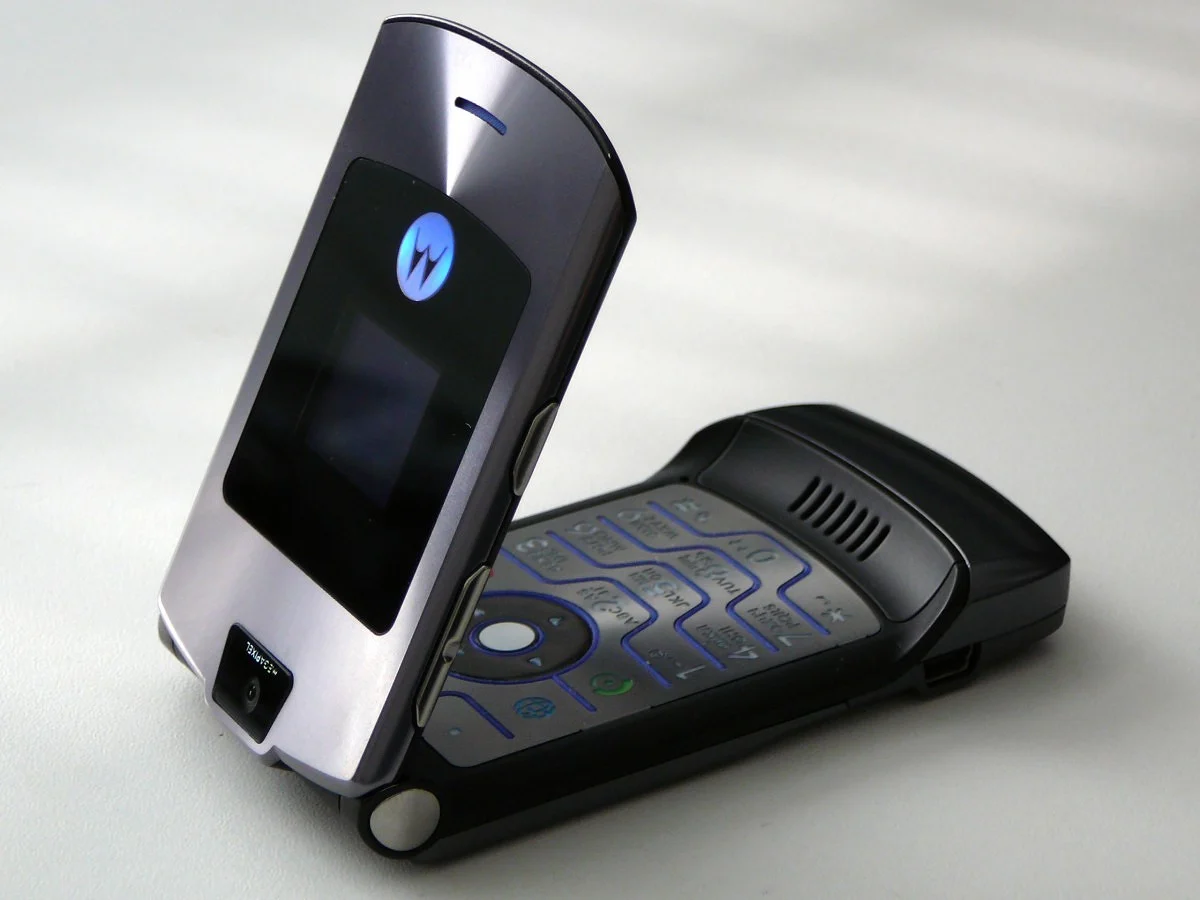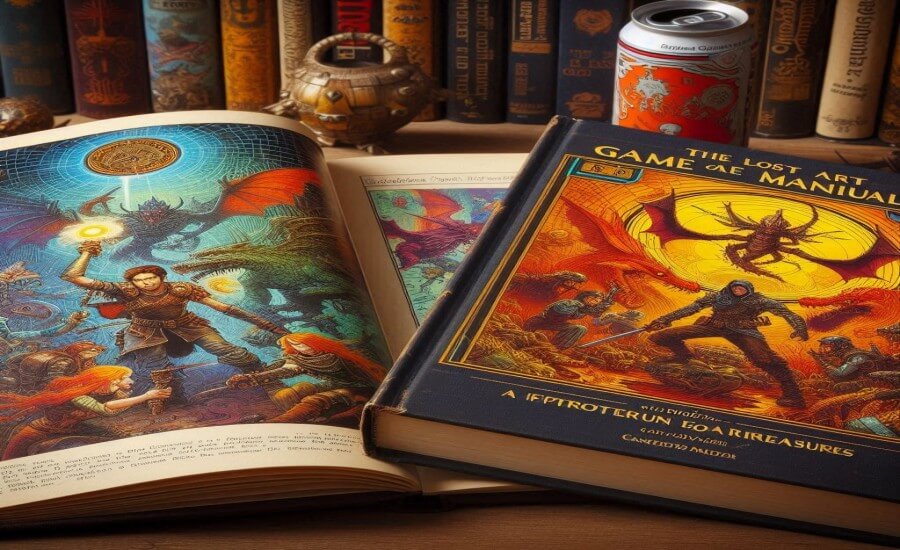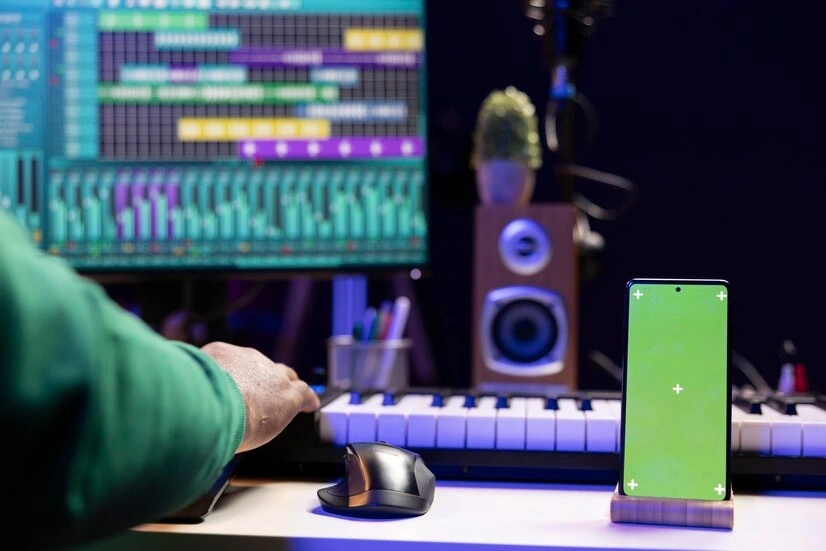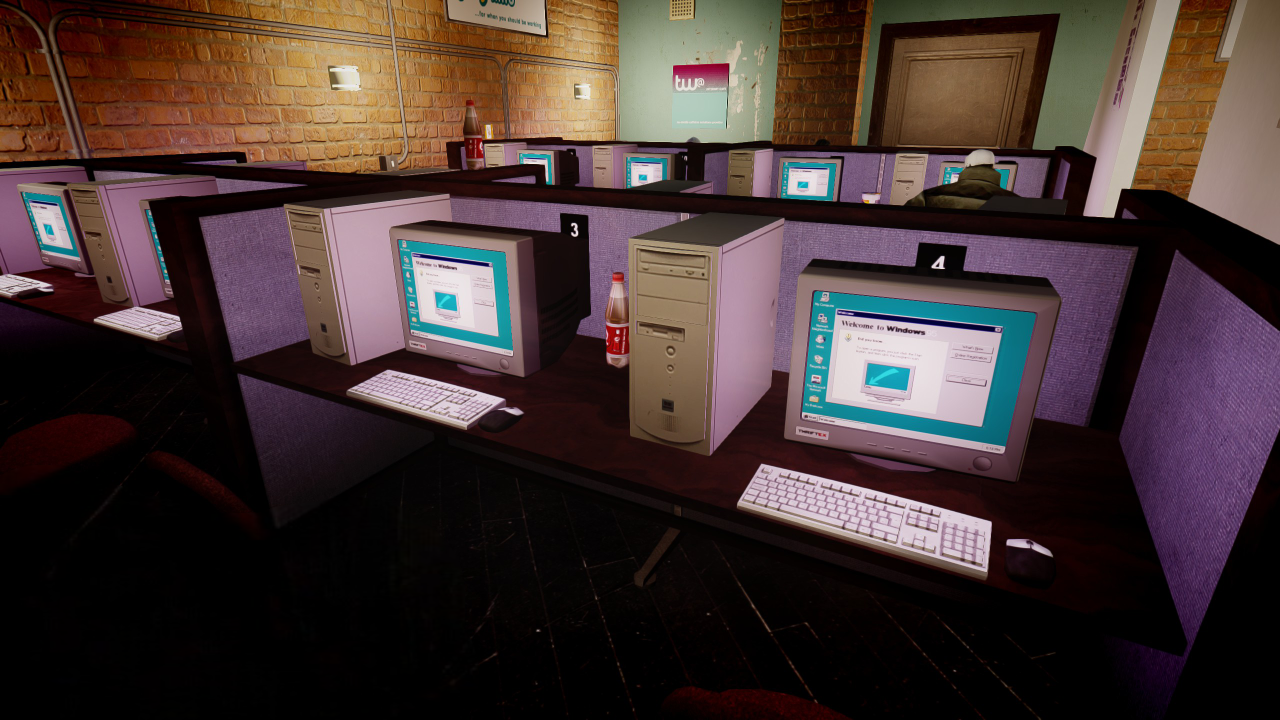It's late 2003. Whispers fill the tech world. Motorola, the company that practically invented the mobile phone and gave us the iconic StarTAC flip, is working on something radical. Sketches leak, rumors fly – a phone impossibly thin, crafted from aircraft-grade aluminum. Could it be real? You feel the buzz, the anticipation for something that doesn't just make calls, but makes a statement. You are there, on the cusp of the RAZR revolution.
The Genesis Era: (Pre-2004)
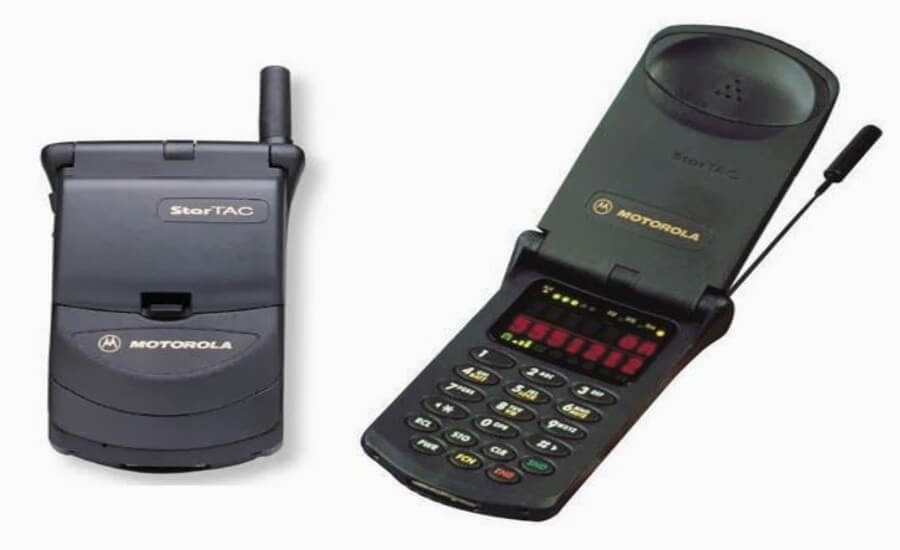
Before the RAZR sliced through the mobile phone market, Motorola already owned the flip phone. The StarTAC, launched in 1996, was the clamshell that started it all – compact, desirable, and famously featured in movies like Clueless. It weighed just 88 grams and was revolutionary for its time. But by the early 2000s, phones were getting clunky, packed with nascent features like WAP browsers and tiny color screens.
Motorola's challenge, internally codenamed "Siliqua" (Latin for pod or husk), was audacious: create a phone less than 15mm thick, significantly thinner than anything else available, without sacrificing usability or style. Engineers faced hurdles with component miniaturization, battery life, and antenna placement. The goal wasn't just a phone; it was a piece of industrial art.
Tech Spotlight: Motorola StarTAC (1996)
The spiritual predecessor. While bulky by RAZR standards (around 23mm thick when closed), its clamshell design, light weight (for the time), and status symbol appeal set the stage. It proved that phone design mattered as much as function.
Parallel Developments
The tech world was buzzing. Nokia dominated with durable candybar phones like the 3310. BlackBerry was gaining traction in the business world with its email-centric devices. Early camera phones were emerging, though image quality was poor. The first Apple iPod (2001) had launched, changing portable music forever.
User Experience Snapshot
Using a StarTAC felt futuristic. Flipping it open to answer a call, the tactile click of the keys, the small monochrome display – it was cutting-edge for the mid-90s. But by 2003, users were juggling thicker phones, often with external antennas, dreaming of something sleeker.
The Breakthrough Years: (2004-2006)

July 2004. The Motorola RAZR V3 is officially unveiled. It lands like a spaceship – impossibly thin at 13.9mm, crafted from magnesium and anodized aluminum, with a chemically-etched keypad that glowed an ethereal blue. It looked and felt unlike any other phone. This wasn't just communication; it was fashion.
Its arrival redefined the premium phone market. Forget specs for a moment; the RAZR V3's primary selling point was its breathtaking design. It instantly became the gadget to have, seen in the hands of celebrities, fashionistas, and business executives alike. It commanded a high price, but its desirability was off the charts.
Tech Spotlight: Motorola RAZR V3 (Launched Q4 2004)
- Thickness: 13.9 mm
- Materials: Aircraft-grade aluminum, magnesium
- Display: 2.2-inch internal TFT (176x220), small external CSTN
- Keypad: Nickel-plated copper alloy sheet, chemically etched, electroluminescent backlight
- Camera: VGA (0.3 megapixels)
- Connectivity: Bluetooth, Mini-USB
- Memory: ~5.5MB internal (non-expandable initially)
Milestone Markers
- July 2004: RAZR V3 announced.
- Q4 2004: V3 becomes widely available.
- 2005: Massive sales, becomes a cultural phenomenon.
- 2005: Introduction of new colors, starting with Black and Pink, dramatically broadening appeal.
Price Point Perspective
The RAZR V3 launched with a premium price tag, often around $500-$600 with a two-year carrier contract in the US (equivalent to roughly $750-$900 in 2025 dollars). Unlocked versions were significantly more expensive. This positioned it firmly as a luxury item, far above the average $100-$200 contract phone.
User Experience Snapshot
Holding the RAZR V3 felt incredible. Cool metal, impossibly thin profile. The satisfying snap as you closed the flip to end a call was iconic. Typing on the flat, glowing keypad was a unique tactile experience. You didn't just use the RAZR; you showed it off. Do you remember the first time you saw one? Or the feeling of finally getting your own?
[ADVERTISEMENT ARCHIVE SUGGESTION: Image of an early RAZR V3 print ad, focusing on thinness and style, often with minimalist visuals and taglines like "Hello Moto."]
The Refinement Period: (2005-2007)
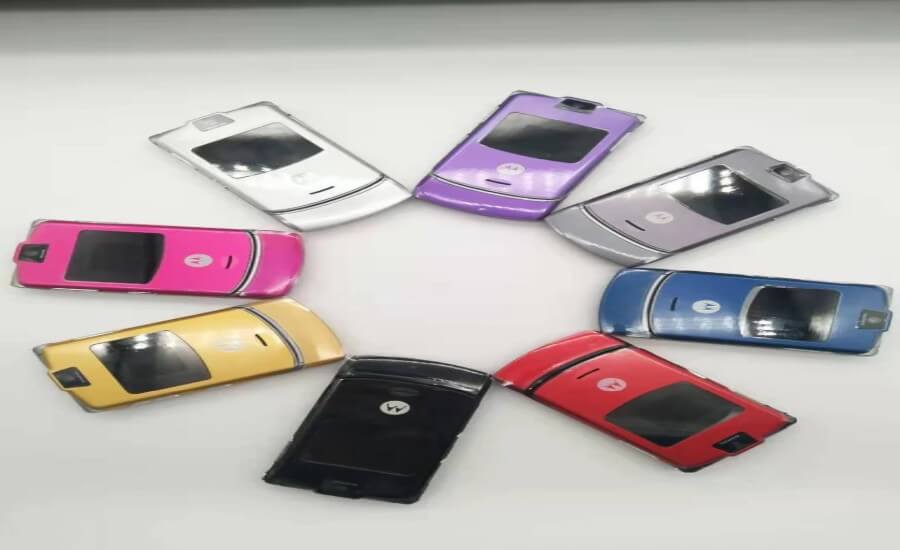
Having struck gold, Motorola leaned into the RAZR's success. This era wasn't about radical redesigns but about refinement and market saturation. The strategy: offer the RAZR in every conceivable color and make minor technical improvements to keep the line fresh. Hot Pink became a massive seller, expanding the phone's demographic significantly.
Models like the RAZR V3i (late 2005) added a slightly better camera (1.23 MP), expandable memory (microSD), and basic music playback capabilities (including a short-lived iTunes integration on some models). The RAZR V3x (late 2005) offered 3G connectivity and a 2MP camera but was thicker, losing some of the original's svelte appeal.
Tech Spotlight: RAZR V3i (Late 2005)
Offered key upgrades while retaining the core V3 design:
- Camera: Upgraded to 1.23 megapixels.
- Memory: Added TransFlash/microSD card slot (up to 512MB or 1GB).
- Software: Improved interface, support for MP3 playback.
Innovation Timeline (2005-2007)
- V3i Launch: Better camera, expandable memory.
- Color Explosion: Pink, Blue, Magenta, Platinum, etc. become available.
- V3x Launch: Adds 3G, 2MP camera, but thicker design.
- iTunes Phone Experiment: Brief collaboration with Apple (e.g., ROKR E1, some V3i models) before the iPhone.
What We Gained / What We Lost
- Gained: More choice (colors!), slightly better features (camera, memory), wider availability and eventually lower prices as newer models emerged.
- Lost: The initial shock-and-awe exclusivity. As RAZRs became ubiquitous, some of the elite cachet faded, though it remained highly desirable.
Unexpected Consequences
The RAZR's overwhelming success might have inadvertently contributed to Motorola becoming somewhat complacent. The focus remained heavily on refining the V3 platform rather than anticipating the next major shift in mobile technology – the rise of the smartphone.
The Revolution: (2007-2009)
January 9, 2007. Steve Jobs unveils the Apple iPhone. Everything changes. While Motorola launched the RAZR2 line (V8, V9, V9m) in mid-2007 – thinner still in places, with larger external screens and improved features – the conversation had fundamentally shifted. Touchscreens, full web Browse, and mobile apps were the future.
The RAZR2 was a beautifully engineered device, a refinement of the flip phone concept. But it arrived just as the tide was turning. The sleek flip, once the pinnacle of mobile cool, suddenly felt like yesterday's tech next to the iPhone's revolutionary multi-touch interface and app ecosystem. The RAZR's reign as the undisputed king of cool was ending.
Tech Spotlight: RAZR2 V8/V9 (Mid-2007)
- Thinner Profile: Around 11.9mm (V8).
- Materials: Stainless steel frame, chemically hardened glass.
- External Display: Large 2.0-inch touch-sensitive display (for music control, notifications).
- Internal Display: 2.2-inch QVGA (240x320).
- Features: Linux-based OS (V8), 2MP camera, CrystalTalk audio technology.
Milestone Markers
- Jan 2007: Apple iPhone announced.
- May 2007: Motorola RAZR2 line announced.
- June 2007: Apple iPhone released.
- Late 2007 onwards: Rapid decline in high-end flip phone sales as smartphones gain dominance.
Industry Voice
"Today, Apple is going to reinvent the phone." - Steve Jobs, Macworld 2007 Keynote. This quote signaled the paradigm shift that would soon eclipse even the most advanced feature phones like the RAZR2.
User Experience Snapshot
Using a RAZR2 felt like the peak of flip phone evolution – solid build, great external screen. But Browse the web was still clunky via WAP or basic HTML browsers. Compared to the iPhone's fluid Safari browser and the potential of apps, the limitations became apparent. The satisfying flip felt less revolutionary, more nostalgic.
The Modern Landscape: (2010s - Present)
The original RAZR form factor faded into feature phone history as smartphones took over. Motorola, after being acquired by Google and later Lenovo, kept the RAZR name alive, first attaching it to thin Android slab smartphones like the Droid RAZR in 2011 – an attempt to recapture the "thin is in" magic in a new era.
But the true return came with the rise of foldable screen technology. In 2019, Motorola revived the iconic flip design with a modern twist: the Motorola Razr foldable smartphone. It featured a flexible OLED display that bent in half, mimicking the original V3's clamshell form factor. Subsequent models (Razr 5G 2020, Razr 2022, Razr+/40 Ultra 2023, Razr 40 2023) have refined the concept, adding larger external displays, better cameras, and flagship-level performance, directly competing in the growing premium foldable market.
Tech Spotlight: Motorola Razr+ / 40 Ultra (2023)
- Display: 6.9-inch foldable internal pOLED, large 3.6-inch external pOLED.
- Processor: Snapdragon 8+ Gen 1.
- Design: Modern interpretation of the clamshell, "zero-gap" hinge.
- Features: Flagship cameras, near-stock Android, full functionality on external display.
Price Point Perspective
The modern foldable Razrs return to the premium pricing of the original V3, often launching around $1000-$1500 USD, positioning them as high-end, design-forward devices in the smartphone market.
Heritage Impact
The enduring legacy of the RAZR V3 is undeniable. It proved that design could sell phones as much as features. Its thinness pushed engineering boundaries. Its cultural impact cemented the flip phone as an icon of the mid-2000s. The modern foldable Razr leverages this powerful nostalgia, offering the familiar satisfying flip combined with cutting-edge technology.
Full Circle Reflections
The journey from the StarTAC's first flip to the V3's impossible thinness, and now to the foldable Razr, is remarkable. The initial promise of the RAZR V3 was ultimate portability combined with high style – a device that felt personal and premium. It delivered spectacularly, defining an era. Today's foldable Razr echoes that promise: a large, capable smartphone that folds neatly in half, blending modern power with that nostalgic, compact form factor.
What We Gained / What We Lost (Overall Journey)
- Gained: Incredible computing power, vast app ecosystems, high-resolution cameras, seamless internet connectivity, foldable screen technology.
- Lost: Tactile buttons, the definitive 'snap' of ending a call, week-long battery life (on older feature phones), a certain simplicity, and perhaps the universal desirability of a single iconic design like the V3.
The Legacy Continues
The RAZR V3 remains a benchmark in industrial design. It taught the industry that phones could be beautiful objects of desire. Its influence can be seen in the persistent pursuit of thinner devices and premium materials. And now, its legacy lives on quite literally in the foldable Razr line, proving that truly iconic designs can find new life even as technology marches relentlessly forward.
FAQ: Motorola RAZR Through the Ages
- When did the original Motorola RAZR V3 come out?
The RAZR V3 was announced in July 2004 and became widely available in the last quarter (Q4) of 2004.
- Why was the RAZR V3 so popular?
Its revolutionary ultra-thin design, premium materials (aluminum), stylish look, electroluminescent keypad, and massive marketing campaigns made it a must-have fashion accessory and status symbol, transcending its function as just a phone.
- How much did the RAZR V3 cost?
At launch, it was a premium phone, typically costing $500-$600 USD with a new two-year carrier contract, significantly more than average phones at the time.
- Does Motorola still make RAZR phones?
Yes, Motorola revived the RAZR brand for its line of foldable Android smartphones, starting in 2019. Models like the Razr+ (2023) offer a modern take on the classic flip design with flexible screens.
What was the biggest impact of the RAZR V3? Its biggest impact was making design and style a primary selling point for mobile phones. It shifted the focus from purely functional devices to objects of desire and fashion statements, influencing phone design for years to come.

